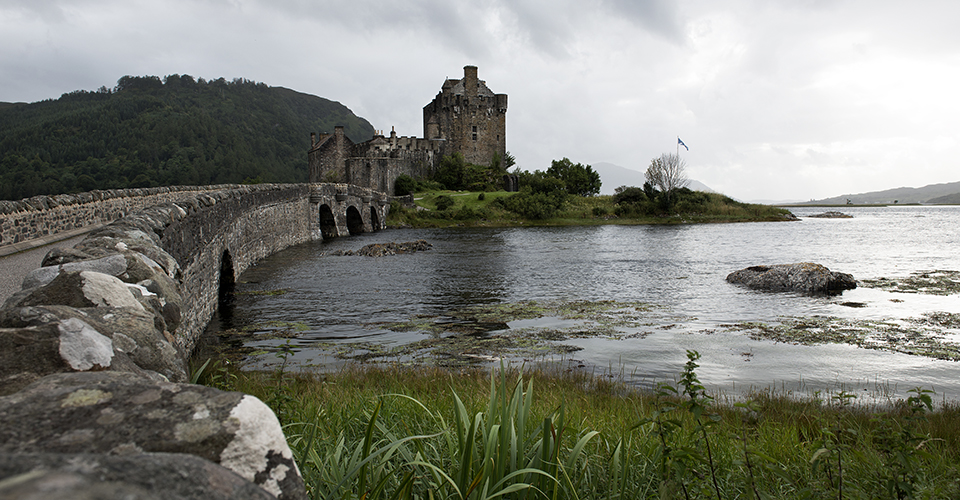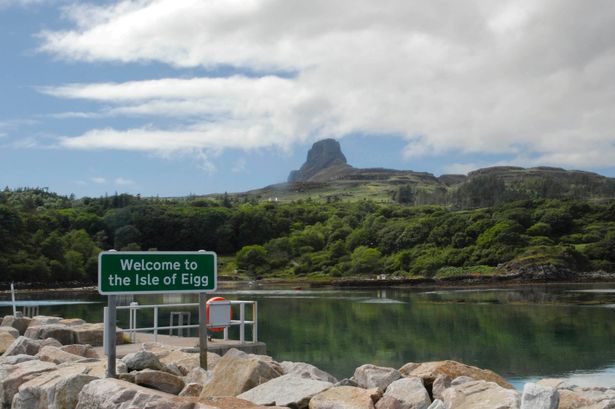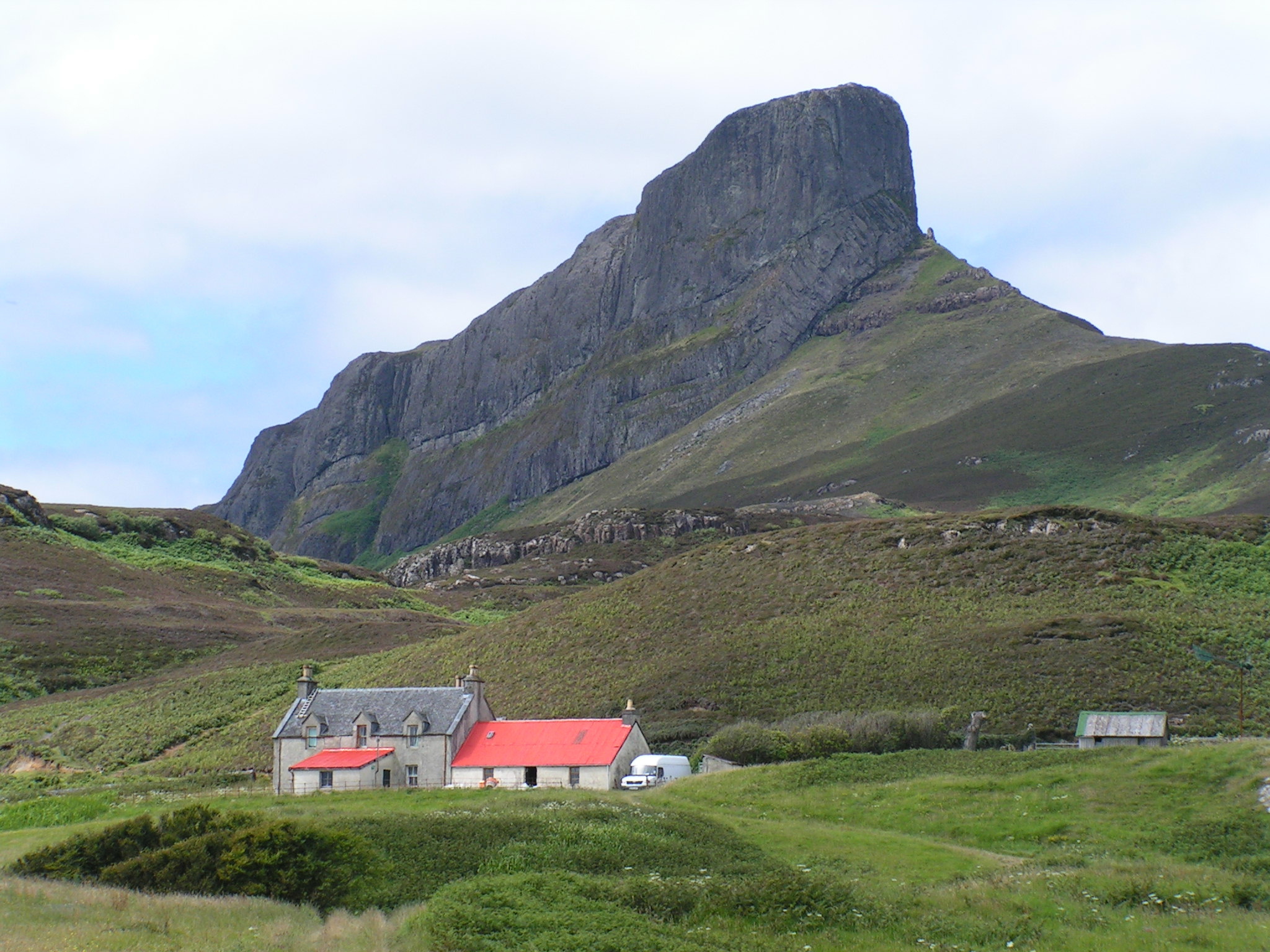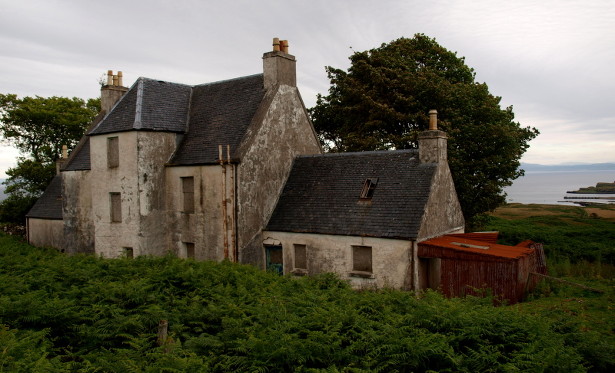Eigg (/ɛɡ/; Scottish Gaelic: Eige) is one of the Small Isles, in the Scottish Inner Hebrides. It lies to the south of the Skye and to the north of the Ardnamurchan peninsula. Eigg is 9 kilometres (5.6 mi) long from north to south, and 5 kilometres (3.1 mi) east to west. With an area of 12 square miles (31 km2), it is the second largest of the Small Isles after Rùm.
Notably, Eigg generates virtually 100% of its electricity using renewable energy.
History
Bronze Age and Iron Age inhabitants have left their mark on Eigg. The monastery at Kildonan was founded by a missionary possibly from either Dal Riata or an Irish Kingdom, St. Donnan. He and his monks were massacred in 617 by the local Pictish queen. In medieval times the island was held by Clan Donald.
Writing in 1549, Donald Munro, High Dean of the Isles wrote of "Egge" that it was: "gude mayne land with ane paroch kirk in it, with mony solenne geis; very gude for store, namelie for scheip, with ane heavin for heiland Galayis".
Isle of Eigg Heritage Trust
After decades of problems with absentee landlords in the 20th century, the island was bought in 1997 by the Isle of Eigg Heritage Trust, a partnership between the residents of Eigg, the Highland Council, and the Scottish Wildlife Trust. At the time, the usually resident population was around 65. The island's population had grown to 83 as recorded by the 2011 census, an increase of 24%. During the same period Scottish island populations as a whole grew by 4% to 103,702. Many of the new residents are young people who have returned to the island or who have moved there to make it their home and set up in business.
The ceremony to mark the handover to community ownership took place a few weeks after the 1997 General Election and was attended by the Scottish Office Minister, Brian Wilson, a long-standing advocate of land reform. He used the occasion to announce the formation of a Community Land Unit within Highlands and Islands Enterprise that would in future support further land buy-outs in the region.
Economy and transport
Tourism is important to the local economy, especially in the summer months, and the first major project of the Heritage Trust was An Laimhrig, a new building near the jetty to house the island's shop and post office, Galmisadale Bay restaurant and bar, a craft shop, and toilet and shower facilities, which are open 24 hours a day. There are two ferry routes to the island. A'Nead Hand Knitwear is a new island business making garments such as cobweb shawls and scarves.
There is a sheltered anchorage for boats at Galmisdale in the south of the island. In 2004 the old jetty there was extended to allow a roll-on roll-off ferry to dock. The Caledonian MacBrayne ferry Lochnevis sails a circular route from Mallaig around the four "Small Isles"—Eigg, Canna, Rùm and Muck from the fishing port of Mallaig. Arisaig Marine also runs a passenger ferry called the MV Sheerwater from April until late September from Arisaig on the mainland.














